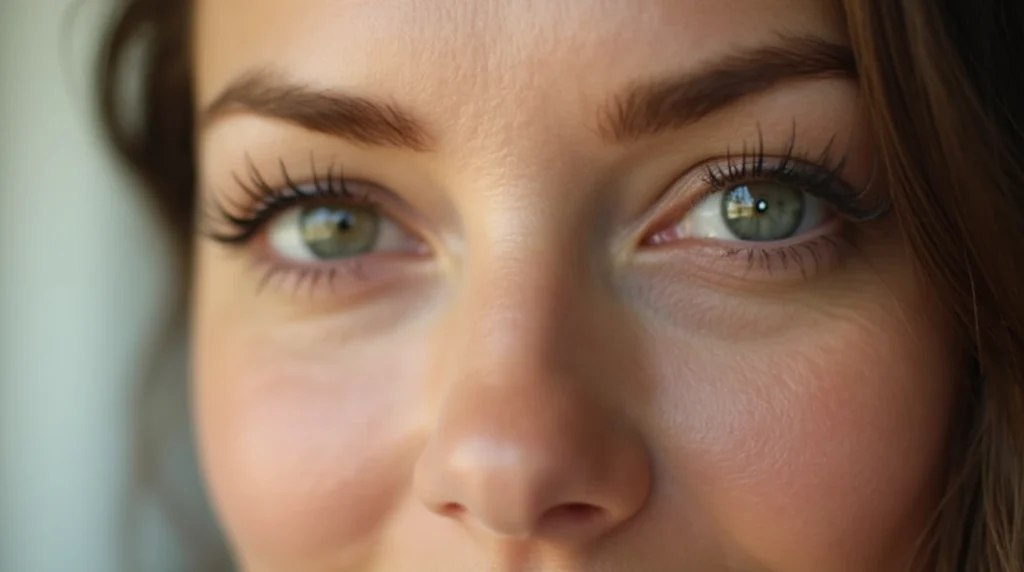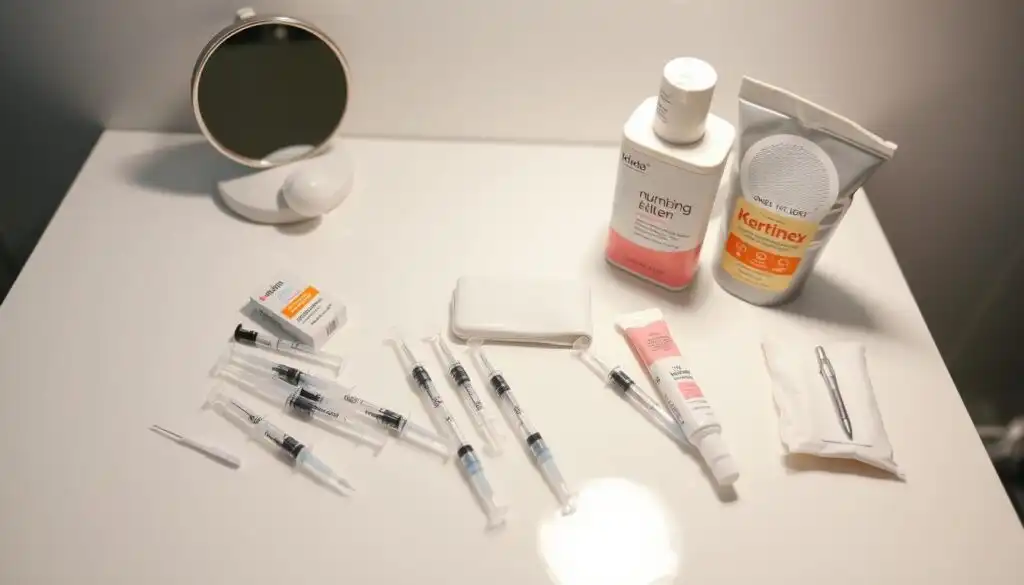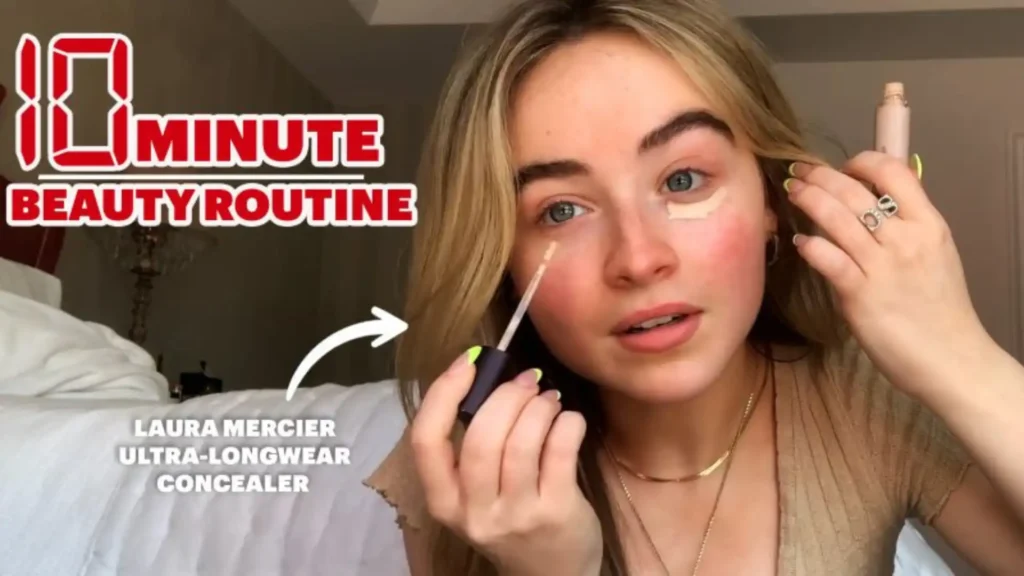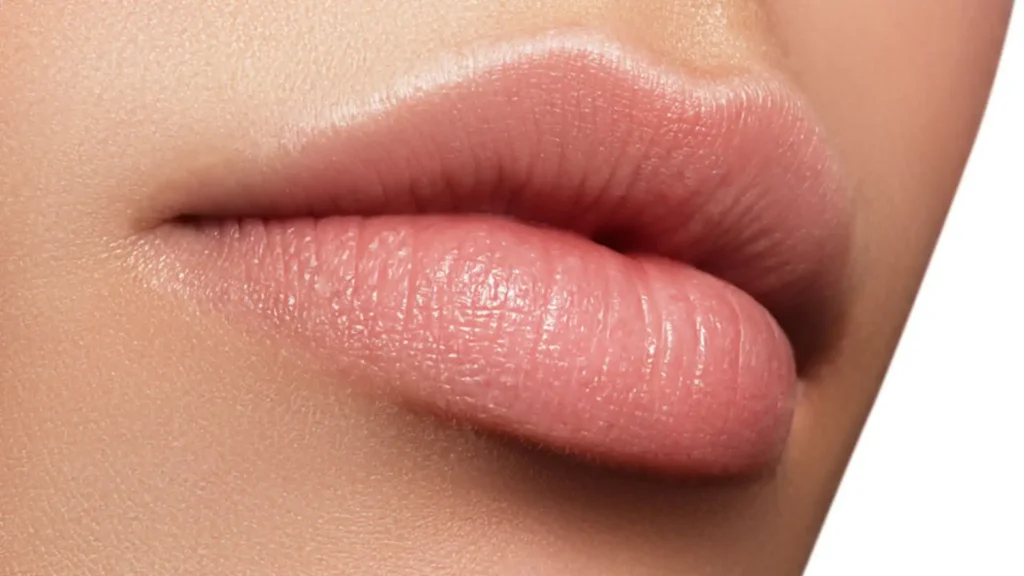Looking for ways to reduce dark circles and fine lines under your eyes? Under eye fillers are a great option for a youthful look. A skilled practitioner can help you pick the right filler for your skin, giving you a radiant glow.
Understanding the types of fillers, like hyaluronic acid, is key. They can address different under eye issues. With the right filler and a pro’s help, you can get natural-looking results and enjoy facial rejuvenation.
Key Takeaways
- Under eye fillers can last between 12-24 months, depending on the individual and treatment.
- Soft hyaluronic acid fillers are a popular choice for under eye treatments due to their compatibility with delicate under eye tissues.
- The cost of under eye fillers ranges from $400 to over $2500, depending on the extent of treatment and practitioner experience.
- Common side effects of under eye fillers include bruising and skin redness, while rare complications can include infections and allergies.
- Cross-linked hyaluronic acid gel fillers are currently the safest and most popular choice for the under-eye area.
- Consulting with a qualified professional is crucial to assess your unique needs and choose the best under eye filler for your individual skin type and concerns.
- Under eye fillers can be used in conjunction with other facial rejuvenation treatments to achieve a more comprehensive and natural-looking result.
Understanding Under Eye Fillers
When you think about under eye treatment, it’s key to know how fillers work. They are filled with hyaluronic acid, calcium hydroxylapatite, or poly-L-lactic acid. These fillers fill in the hollows and add volume to the under-eye area. This helps reduce dark circles, hollows, and fine lines, common facial issues.
Hyaluronic acid fillers are a top pick for many. They offer quick results and long-lasting effects. Fillers like Restylane and Juvederm can last 9 to 12 months, depending on your skin.
Other fillers, like calcium hydroxyapatite and poly-L-lactic acid, also work well. They can last up to 18 months or 2 years. They offer a more dramatic improvement in fullness and texture. Knowing about these fillers helps you choose the best under eye treatment for you.
Benefits of Under Eye Filler Treatments
Under eye filler treatments give you instant results and require little downtime. They are made to fix hollowness, dark circles, and fine lines under the eyes. This makes you look younger and more rested, like you’ve slept for 12 hours.
The treatment is fast, taking about 30 minutes. It’s great for people with busy lives. These fillers use hyaluronic acid, a natural body substance, to add volume and moisture. This makes them a top pick for a non-surgical beauty fix.
Getting under eye fillers from an expert is key for the best results and safety. The biggest risk is a bad cosmetic outcome. But, with the right care, these fillers can last 6 to 24 months. This depends on the filler type, your metabolism, and lifestyle.
Choosing under eye fillers means you get to enjoy facial rejuvenation and dermal fillers’ benefits. You’ll see instant results, have little downtime, and face low risks of problems. Under eye fillers are a great choice for those wanting to tackle under eye issues.
Types of Dermal Fillers for Under Eye Area
Dermal fillers are a top pick for tackling dark circles, hollows, and fine lines under the eyes. They help restore lost volume and refresh the area. There are many types of fillers, each with its own benefits.
Hyaluronic Acid Fillers
Hyaluronic acid fillers, like Restylane and Juvederm, are favorites for the under eye. They draw in and hold moisture, making them great for hydration.
Calcium Hydroxylapatite Fillers
Calcium hydroxylapatite fillers, such as Radiesse, are also used for the under eye. They contain calcium and phosphate, naturally found in our bodies. This makes them safe and effective.
Poly-L-Lactic Acid Fillers
Poly-L-lactic acid fillers, like Sculptra, are another choice for the under eye. They boost collagen production, which is perfect for fine lines and wrinkles.
Determining Your Candidacy for Treatment
Before getting under eye filler treatment, it’s key to check if you’re a good candidate. Your skin type, concerns, and medical history play a big role. If you have dark circles, hollows, or fine lines, fillers might help.
Seeing a qualified practitioner is crucial. They’ll look at your skin and talk about your goals and history. This helps figure out if fillers are right for you and which ones to use.

Choosing the right fillers and practitioner leads to natural-looking results. Fillers can make you look younger by tackling dark circles and lines. With the right treatment, you’ll feel more confident and radiant.
The Science Behind Under Eye Fillers
Understanding the science behind under eye fillers is key for natural results. The under eye area is delicate. Dermal fillers need a deep grasp of facial anatomy to work well.
By filling in hollows and adding volume, under eye fillers tackle dark circles, wrinkles, and hollowness.
Anatomy of the Under Eye Area
The under eye area’s anatomy is complex, with thin skin and delicate tissues. Hyaluronic acid-based fillers need a deep understanding of this anatomy for safe and effective treatment. The right filler and technique can make you look more youthful and rested.
How Fillers Interact with Facial Tissues
The interaction between fillers and facial tissues is crucial for under eye filler success. The aim is to restore lost volume and correct hollows, while allowing for natural skin movement. Using dermal fillers that consider viscosity and elasticity leads to natural-looking results. These results enhance youthfulness without looking overdone or artificial.
Preparing for Your Under Eye Filler Treatment
Getting ready for your under eye filler treatment is key. You should avoid certain meds and supplements to prevent bruising or bleeding. Your doctor might tell you to stop these a few days early for a safe process. Dermal fillers, like hyaluronic acid, are used for a youthful look and can last up to 12 months.
It’s important to listen to your doctor’s advice on preparation. This might mean avoiding hard activities after the treatment. By doing this, you can get the best results and recover safely. Fillers can help with dark circles and hollowness, making you look younger and more awake.

For the best outcome, choose an experienced injector. They’ll tailor the treatment to your needs. Combining fillers with other treatments can give you a more complete and lasting look. Always talk to your doctor about what you want and any worries you have for a great experience.
What to Expect During the Procedure
Before your under eye filler procedure, it’s good to know what to expect. The treatment involves injecting hyaluronic acid under your eyes. This helps restore volume and improves the look of the area.
This facial rejuvenation method takes about 20 minutes. It aims to fix dark circles, under eye hollows, and fine lines and wrinkles.
Step-by-Step Treatment Process
The process starts with a consultation to figure out what’s best for you. A topical anesthetic might be used to make you more comfortable. Then, the fillers are injected under your eyes with a fine needle.
You’ll see the results right away. Your under-eye area will look better.
Pain Management and Comfort
Comfort is key during the procedure. Most people find it barely painful, thanks to the anesthetic. You might see some swelling or redness, but it goes away in a day or two.
Recovery and Aftercare Guidelines
After getting under eye filler treatment, it’s key to follow the right recovery and aftercare steps. This means avoiding hard activities, certain meds, and following your doctor’s post-treatment advice. Doing this helps lower the chance of problems and gets you the best results from your fillers.
You might feel some swelling, tenderness, or slight pain after the treatment. These feelings usually go away in 24-48 hours. To lessen swelling and redness, use a cold compress for 5-10 minutes every few hours on the first day. Also, skip alcohol and caffeine for 24-48 hours after to cut down on bruising.
As you go through the recovery, make sure to see your doctor for follow-up visits. This ensures you get the most out of your facial rejuvenation treatment. By following these steps and taking care of your under-eye area, you can enjoy the benefits of dermal fillers and look younger.
Don’t do hard exercise for at least 24 hours after treatment. Also, wait 12-24 hours before putting on makeup to avoid infection. By focusing on your recovery and aftercare, you’ll get a natural-looking result from your under eye filler treatment. And you’ll enjoy the benefits of facial rejuvenation.
Potential Risks and Side Effects
Under eye filler risks and side effects can happen with any cosmetic treatment. It’s key to know about possible problems when getting dermal fillers for facial rejuvenation. Common issues include bruising, swelling, and mild discomfort, which usually go away in a few weeks.
The Tyndall effect, a bluish tint, might show up if fillers are put in too close to the surface.
But, serious problems like vascular occlusion can occur, leading to tissue damage or even blindness. Though rare, it’s a risk. Infection, allergic reactions, and granuloma formation are also possible but not common. Choosing a skilled practitioner can help avoid these risks and ensure a safe treatment.
To lower the risks of under eye fillers, follow aftercare instructions and keep up with follow-up appointments. If you notice unusual symptoms like persistent swelling, redness, or discomfort, reach out to your provider right away. Knowing about these risks helps you make a smart choice for under eye filler treatment. This way, you can have a safe and successful facial rejuvenation with dermal fillers.
Cost Considerations and Insurance
When thinking about under eye filler treatment, it’s key to consider the cost. The price of dermal fillers changes based on the type and where you are. On average, hyaluronic acid fillers cost $684 per syringe, says the American Society of Plastic Surgeons. The total cost for tear trough fillers can be between $684 to $1,500, depending on how many syringes you need and where you are.
Under eye fillers are for cosmetic reasons, so health insurance usually doesn’t cover them. But, many clinics have financing options and discounts for buying more treatments. It’s important to talk to a qualified doctor to figure out the best treatment and what it will cost.
To keep the effects of under eye fillers, you might need to get them done again. The effects of tear trough fillers last about 1 year. Many people get them every 1 to 2 years to keep looking good. Knowing the costs and what’s available helps you make a smart choice for your face.
Maintaining Your Under Eye Filler Results
To keep your under eye filler results looking great, follow a few important tips. Most fillers for this area last 6 months to 1 year. Some can even last up to 2 years. How long they last depends on your skin type, the filler used, and your metabolism.
Timeline for Touch-ups
Getting regular touch-ups is key to keeping your under eye fillers looking good. Most doctors suggest getting follow-up treatments every 6-12 months. This keeps your results looking fresh. If you’re younger and have tighter skin, you might need touch-ups less often.
Complementary Treatments
Along with touch-ups, treatments like RF microneedling can help your fillers last longer. This treatment boosts collagen to tighten and smooth the under eye area. Also, using good skincare and protecting your skin from the sun can help your fillers last longer.
FAQ
What are under eye fillers?
Under eye fillers are injectable treatments. They help with dark circles, hollows, and fine lines under the eyes.
How do under eye fillers work?
They restore volume and smooth the under-eye area. This makes it look more youthful and refreshed.
What are the benefits of under eye filler treatments?
They offer instant results and are minimally invasive. Plus, they require little downtime.
What types of dermal fillers are available for the under eye area?
There are hyaluronic acid, calcium hydroxylapatite, and poly-L-lactic acid fillers. Each has its own benefits and side effects.
How do I know if I’m a good candidate for under eye filler treatment?
Your skin type, concerns, and medical history matter. Talk to a qualified practitioner to see if it’s right for you.
How does the science behind under eye fillers work?
It involves understanding the under-eye area’s anatomy. Fillers interact with facial tissues to achieve results.
What should I do to prepare for my under eye filler treatment?
Avoid certain medications and supplements. Also, skip strenuous activities. Follow your practitioner’s pre-treatment instructions.
What can I expect during the under eye filler procedure?
You’ll go through a step-by-step process. There will be pain management and comfort measures. Follow your practitioner’s post-treatment care.
What is the recovery and aftercare process for under eye filler treatment?
Avoid strenuous activities and certain medications. Follow your practitioner’s instructions. Attend follow-up appointments for the best results.
What are the potential risks and side effects of under eye filler treatment?
Common side effects include swelling and bruising. Rare complications can also occur. Choose a qualified practitioner to minimize risks.
How much does under eye filler treatment cost, and what are the insurance options?
Costs vary based on several factors. Some insurance may cover part of it. Talk to a qualified practitioner about costs and financing options.
How do I maintain my under eye filler results?
Follow your practitioner’s advice on touch-ups and complementary treatments. This helps maintain your results.
Follow us on: 📌 Pinterest | 📘Facebook





